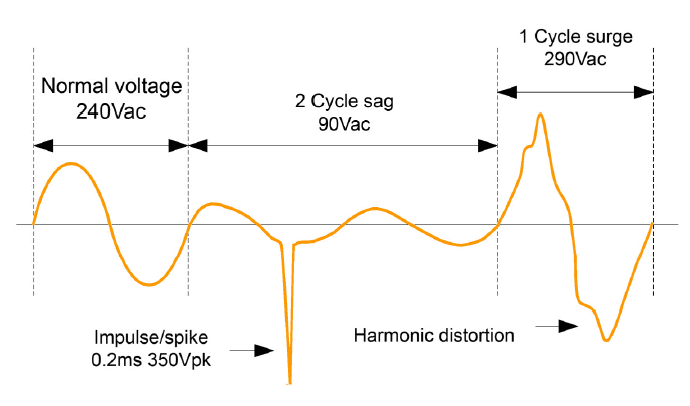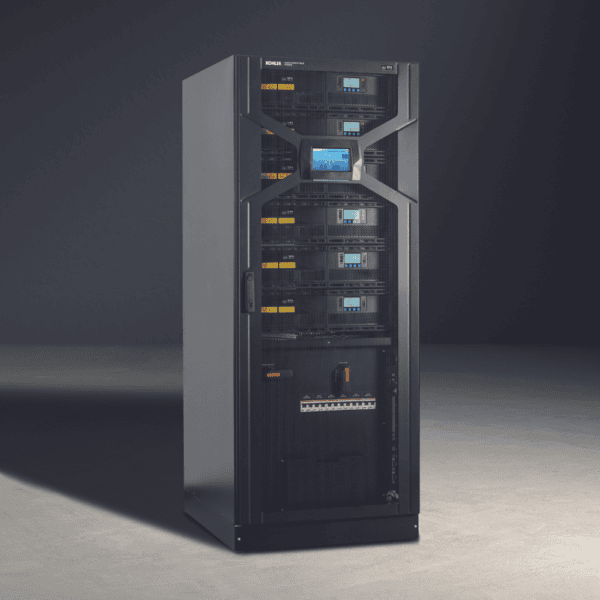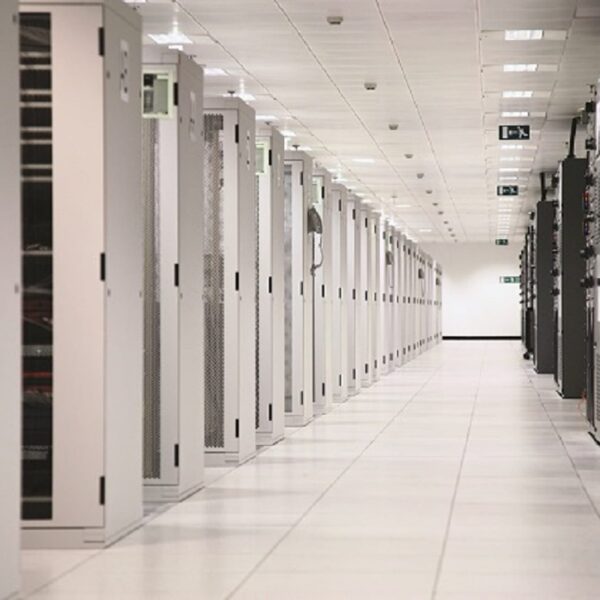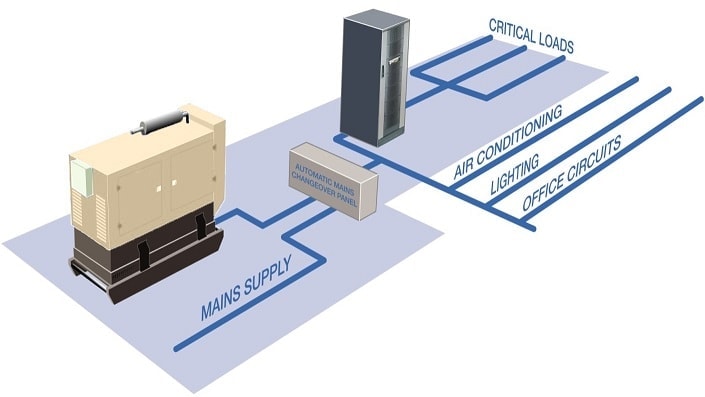In this article, Alex Emms, Technical Director at KOHLER Uninterruptible Power, explains the UPS’s vital role during mains presence, as well as in blackouts, and shows the importance of selecting on-line systems.
How does a UPS protect against voltage sags and surges?
Most people in IT are aware that UPSs use batteries to seamlessly take over the critical load if the incoming mains supply fails. While this is certainly true, UPSs form an equally important role in managing power quality when the load is being supplied from the utility grid. This is because any mains supply is liable to many types of disturbance apart from total blackout – and these have the potential to damage or destroy any unprotected sensitive load.
Data centre loads are typically described as critical, both in the sense of their availability to the application relying on them, and of their own dependence on high-quality power at all times.
On-line processing and e-commerce applications are good examples of this, because of their obvious requirement for uninterrupted availability. Other equally critical applications include data processing computers, precision manufacturing equipment, medical devices in applications like life support and patient monitoring, telecommunications network equipment and point of sale (POS) terminals.
Possible consequences of power failure
A power supply transgression’s immediate effect could be to cause an equipment failure arising from component damage. However, even if the supply problem only halts the load rather than damaging it, the consequences can still be serious. An unexpected hardware stop will cause a software crash, leading to data loss or corruption. Business transactions will be interrupted and lost, exposing the enterprise to wider financial implications and loss of reputation.
Data centre power failure
In April 2015, for example, a data centre in Oregon belonging to Legacy Health System, a non-profit hospital system, suffered a power outage following a power surge[i]; this caused a complete shutdown of the organisation’s servers, information network, and access to clinical and electronic management systems. The power outage was caused by a contractor drilling into a cable.
In a manufacturing environment, the results could be equally if not more serious; control systems could be driven into inappropriate operation, for example. Both production equipment and product can be damaged, with time needed for cleaning up as well as repairs.
So, how serious is the threat to your particular installation, and what can you do to mitigate it? The answer depends on three factors; the type of power disturbances that could appear on your mains supply, the type of equipment to be protected and its susceptibility to these problems, and the steps you take to provide protection. Let’s look at these factors, see how they interact, and draw some conclusions on providing protection appropriate to your circumstances.
Factors to consider for UPS requirements
Power problems
Fig.1 shows the problems most commonly experienced. Spikes are short duration rapid voltage transitions superimposed on the mains waveform. They can inflict both positive and negative voltage excursions, damage or destroy electrical and electronic components, and corrupt software. Software problems may be particularly difficult to track down and rectify, as they may not show until some time after the damage occurred.
Spikes are typically caused by thermostats or other equipment switching high electrical currents, or
load switching by power companies. Locally-grounded lightning strikes are without doubt the most serious and dramatic cause of spikes, particularly when induced into telecommunications cables.

Fig.1: Power problem summary
Electrical noise caused by disturbances between the supply lines and earth is called common mode noise. Conversely, normal mode noise, which arises from disturbances between line-to-line and
line-to-neutral, can originate from sources such as lightning strikes, load switching, cable faults and nearby radio frequency equipment. Electrical noise can cause computers to hang and corrupt data.
Surges are voltage increases above normal mains levels that exceed one cycle. They typically appear after a large load is switched off or following load switching at substations. With long duration, voltage surges can degrade a computer’s switched mode power supply components and lead to premature failure.
Sags are drops in the mains supply that can last for several cycles. They are generated similarly to negative spikes but have a much longer duration. Sags are very common occurrences that are usually the result of switching on large loads like air conditioning equipment, or starting rotating machinery.
Sags can cause a computer re-boot if the mains voltage falls so low that the computer believes it has been switched off.
Harmonics are generally caused by non-linear loads which draw large peak currents from the mains supply. Loads containing controlled rectifiers, switched mode power supplies, or rotating machines are particularly noted for generating this type of interference. These include computers, photocopiers, laser printers and variable-speed motors.
Harmonics cause a disproportionate rise in current, resulting in increased temperatures which can cause component failure and general equipment overheating.
Brownouts are identical to sags but are of much longer duration and generally more serious. They arise when the mains supply cannot cope with the present load demand, so the generating company drops the overall network voltage. Brownouts can last for several hours in extreme circumstances.
Blackouts are complete power losses, where the mains supply fails totally. Caused by supply line faults, accidents, thunderstorms and a range of other conditions, they have an obvious, sometimes devastating effect.
General equipment susceptibility
Computers typically have specified upper and lower limits for steady state slow averaged rms line voltage variations of between ±5% to ±10%, depending on the manufacturer, but will tolerate short duration line voltage excursions outside those limits. The shorter the duration of the excursion, the greater the excursion which can be tolerated.
Some computers have sufficient energy stored in their internal power supply reservoir capacitors to sustain the dc supply to logic circuits during line voltage sags and power line interruptions of up to a 1/2 cycle (10ms), although not all units have this much ride-through capability.
UPS protection
From the above we can see that computer equipment resilience to mains disturbances is very limited; managing the mains supply power quality at all times is essential.
The most important measure is to select a UPS with on-line double conversion topology, as shown in Fig.2. This provides the highest level of power protection because it positions the rectifier and inverter as barriers between the supply and the load; these remove mains-born noise and transient voltages. In fact, the load is not connected to the mains supply at all – instead, it is driven by a pure, well-regulated sinusoidal output from the inverter. Importantly, the inverter maintains its level of supply regulation even when it is operating from the UPS battery during a power failure.
As well as filtering out events like spikes, the UPS also protects against excursions beyond a preset voltage range caused by surges or sags. It does so by switching to battery power, as it would for a complete blackout.
Fig.2: On-line double conversion UPS topology
Externally-connected components can complement the UPS’s protection role. Radio frequency noise interference and spikes can be substantially reduced by fitting suitable filters and some form of isolation transformer in the supply line. Surge suppression components can also be fitted.
Conclusion
Above, we have seen how a critical load can be threatened as much by live utility mains supply problems as by blackouts. It also becomes clear that to provide true UPS protection against all potential supply contingencies, selecting a system with dual on-line topology is essential. Users then enjoy both protection from mains aberrations, and battery autonomy during blackouts.
Reference





